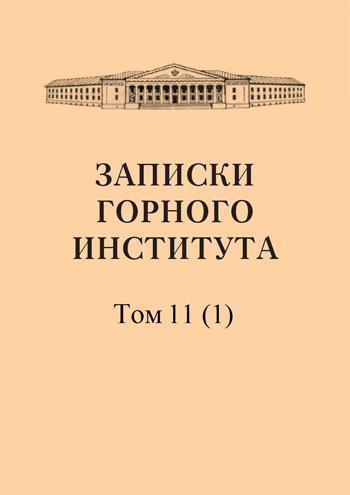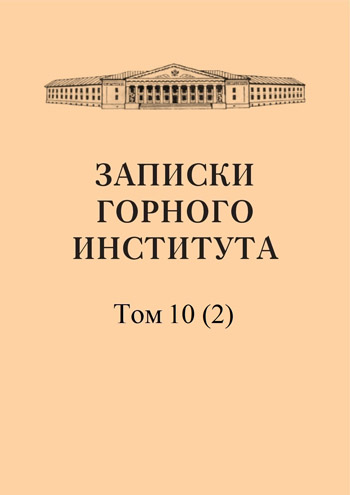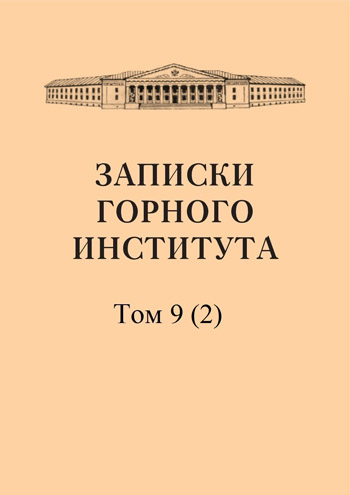-
Date submitted1936-07-09
-
Date accepted1936-09-13
-
Date published1937-01-01
Mineralogy of the Khalilovskie deposits of chrome spinels, magnesium carbonates and nickel ores in the Southern Urals
- Authors:
- A. I. Kiselev
The purpose of this article is the mineralogical study of the Khalilovsky nickel-hydrosilicate deposits. Along with this author, chromite and magnesite deposits were examined. As a result of geological observations, a geological map and sketches were compiled. Chromite itself and holocrystalline magnesite are unknown in Khalilov. Minerals of chromium and salts of magnesium carbonate are represented by completely different mineral species. Therefore, their deposits are named in a broader sense, namely chrome spinels and magnesian carbonates. There are 25 elements known in the Khalilovsky massif: H, K, Na, Mg, Ca, Sr, Ba, Ag, Au, Pt, Zn, Cu, Fe, Ni, Co, Mn, Cr, Ti, V, As, P, Si, Zr(?), C, S. Of these, the content of noble metals is noted spectrally; Zn, V - in traces, Sr, Ba - in hundredths of a percent.
-
Date submitted1936-07-10
-
Date accepted1936-09-02
-
Date published1937-01-01
Geology of the Soviet Tien Shan in the light of new data
- Authors:
- V. G. Mukhin
In connection with the identified new scheme of the geological structure of the Soviet Tien Shan, all the volcanic processes of the latter are rejuvenated. In confirmation of this, we observe the appearance of basalts among the tertiary sediments in the valley of the Naryn River, discovered by S. S. Shultz, granite aplites in the Dzhemandavan ridge, found by O.I. Sergunkova, cutting through the Tertiary Naryn salt-bearing formation, the deposit of cockade lead ores described by I.I. Bezdeka in the Akshiyryak ridge among Quaternary conglomerates, etc. All this suggests that it is necessary to set a priority task to review all manifestations of volcanism in within the Tien Shan and not only Alpine tectogenesis, but also more ancient periods of its manifestations. This question is not only of purely scientific, but also of great practical importance, as it makes it possible to expand the base of searches for various minerals associated with intrusions, both vertically and in area. All those deposits that were previously considered characteristic only of the “central arcs” of the Tien Shan can now and should be discovered in the “northern arcs” of the latter, such as deposits of mercury, antimony, arsenic, radioactive ores, etc.
-
Date submitted1936-07-24
-
Date accepted1936-09-28
-
Date published1937-01-01
Influence of orogenic movements on the composition of ore-bearing facies of the Chiatura manganese deposit
- Authors:
- A. G. Betekhtin
One of the remarkable features of the geology of the Chiatura manganese deposit is the presence of different facies of ore-bearing sediments. Of particular interest is the change in these facies in the vertical section of the manganese ore strata, which was well traced both from outcrops and from numerous drill holes. Analysis of the geological structure of the formation of ore-bearing sediments and host rocks led to the conclusion that the vertical change of facies depended on the orogenic movements that took place at the time of formation of the manganese ore strata. A very interesting fact was that within the area of the Chiatura deposit, which occupies an area of about 100 square meters. km, the amplitude of these movements in different parts of it was apparently unequal, which affected the mineralogical composition and structure of various facies. The proposed work contains a brief summary of the main provisions relating mainly to this phenomenon, almost unknown in the literature, among sedimentary ore deposits. There is reason to assume that changes in the composition of facies in the vertical section in the Oligocene deposits of the Chiatura region were caused by orogenic movements, which were the last echoes of the pre-Oligocene orogenic phase.
-
Date submitted1936-07-28
-
Date accepted1936-09-16
-
Date published1937-01-01
On the geology of the Bukachachinsky coal deposit
- Authors:
- A. S. Kumpan
The Bukachachinskoye field, located in Eastern Transbaikalia (coordinates 53° N and 116°50' E), attracts attention for three reasons. Firstly, among other Mesozoic spots in Transbaikalia, it has undergone the most detailed geological research , and therefore the results of work on it make it possible to outline a methodology for studying such deposits, which has not yet been sufficiently developed, secondly, because its study sheds light on the genesis of Upper Jurassic deposits and tectonics and, thirdly, because the deposit has sintering coals, which sharply distinguishes it from other brown coal deposits in Transbaikal. The coal-bearing deposits of the deposit occupy an area of about 40 km², their boundaries are the Sarananda and Kudikhta rivers. Coal-bearing deposits are surrounded by hills of crystalline rocks, and the boundary of their distribution coincides with the boundaries of the valley. These contours, in addition to their natural outlines, due to the different hardness of crystalline rocks and coal-bearing deposits, were established by exploration work, the lines of which intersect the deposit at a close distance from each other, and these lines in places extend onto granites. There are no natural outcrops of coal-bearing strata in the area, and all data on its occurrence and composition were obtained on the basis of workings.
-
Date submitted1936-07-10
-
Date accepted1936-09-22
-
Date published1937-01-01
New data on the tectonics of central Kopet-Dag
- Authors:
- V. P. Miroshnochenko
Kopet-Dag is a mountainous region, poorly illuminated geologically. The question of a clear understanding of the tectonic structure of Kopet-Dag is of enormous importance for determining the regime of groundwater, the direction of its flows, quantity, area of distribution, etc. The problem of water in Turkmenistan has always been one one of the most important, and now in connection with the socialist reconstruction of Ashgabat, the development of industry and cotton crops in the Kopetdag region, it is of particular importance. An accurate understanding of the true tectonic structure of Kopet-Dag is also required in order to find the place and role of the latter on the tectonic background of the vast territory embracing the folded regions of southern and northern Iran, Armenia, the Caucasus, Mangyshlak and Emba. This will undoubtedly bring clarity to the understanding of the nature of the relationship between the Kopet-Dag and the Karakum depression and will be the necessary material for solving the most important practical problem of Turkmenistan regarding the direction of the continuation of the Western Turkmen oil strip.
-
Date submitted1936-07-22
-
Date accepted1936-09-05
-
Date published1937-01-01
Materials for understanding the genesis of the Monetnaya Dacha emerald deposit in the Urals
- Authors:
- N. M. Uspenskii
Emerald mines are located on the eastern slope of the Urals among a swampy forest area 70 km northeast of Sverdlovsk, in the former Monetnaya forest dacha. The formation of the Emerald Mines region involves metamorphic and igneous rocks with abundant and varied vein derivatives. Sedimentary rocks have not been identified, except for modern sandy-clayey deposits. The rocks composing the region can be divided into the following groups: northeastern porphyritic granite, western granite, eastern intrusion, including southeastern gabbro, a band of amphibolites and a northeastern complex of metamorphic rocks.


